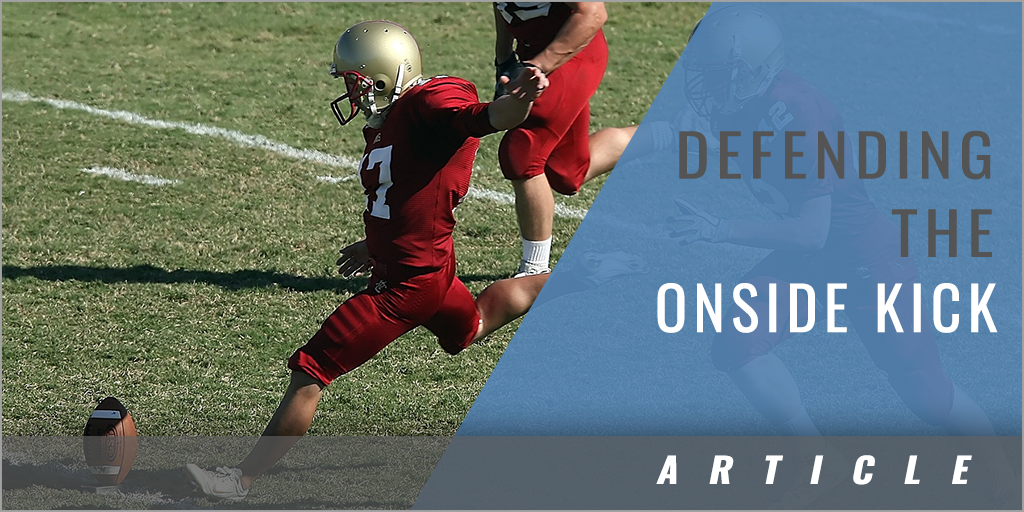| Originally Published in Coaching Football Technical and Tactical Skills by ASEP
Your opponent has just scored and is now behind by 8 points or less. They do not have enough time left in the game to kick off, stop your offense and force a punt. They must get the ball back immediately, so they decide to use an onside kick, in which they kick the ball only the 10 yards it needs to go
to become a live ball and then try to recover it. You must have a plan to defend the onside kick using a specialized kickoff return unit called the hands team. The hands team consists of a select group of players whose ability to catch the football and excellent eye-hand coordination should enable them to react to a bouncing football and cover it. They also must be tenacious and tough, because the other team will be sending 10 of their best athletes charging at them to knock them out of the way and get the football back for themselves! Note: The onside kick is likely at two other times other than in the very late stages of the game. First, when the kicking team is behind by 9 to 16 points with six minutes or less left in the game, they may try the onside kick because they have to score twice to win. Second, when the receiving team has been penalized 15 yards on the previous scoring play, the kicking team might try the onside kick because they are now kicking off from the 50-yard line instead of the 35-yard line and will not place the receiving team in great field position if the onside kick is unsuccessful. WATCH OUT!
ACQUIRING THE APPROPRIATE KNOWLEDGE Rules
Physical Playing Conditions
Strengths and Weaknesses of Opponents
Decision-Making Guidelines
|






